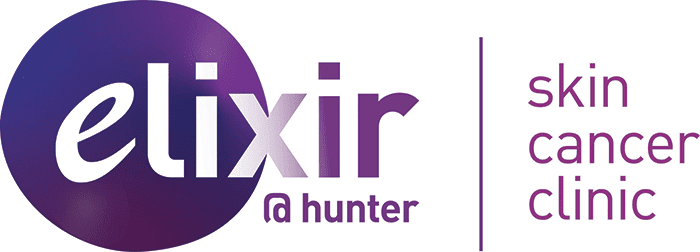Non-surgical Skin Cancers Management Maitland
We offer non-surgical treatment options including: cryotherapy, topical medications and photo dynamic therapy for certain superficial skin cancers. Book your consultation with Skin Cancer Clinic Maitland – Elixir @ Hunter by calling (02) 4067 4119 or booking online.
Cryotherapy
Cryotherapy is a common office based treatment for skin lesions. The idea is to freeze the abnormal lesion and a small amount of surrounding normal skin. When the frozen cells subsequently thaw out, the contents within the cells rupture and the cells die.
The most common method of cryotherapy is to use liquid nitrogen. This drops the temperature of skin quickly to well below freezing point. The liquid nitrogen is applied through a “gun” that sprays the liquid onto the skin. At times, your doctor may spray the liquid nitrogen through a little cone shaped device to focus the freezing at just a single site. Cryotherapy can also be undertaken by application with a cotton bud.
Cryotherapy is very commonly used to treat sunspots or actinic keratosis. These are premalignant skin lesions caused by sun exposure. After cryotherapy, blistering and redness often occur, and the site can look unpleasant for a week or more. As the skin heals fresh skin cells will grow and regenerate the area that was treated.
Cryotherapy is also sometimes used for lesions unrelated to sun damage, such as warts or seborrhoeic keratoses (senile warts).
The most common complication of cryotherapy is “hypopigmentation”. This means the treated skin ends up a few months later looking more pale than the surrounding skin. This occurs because the pigment producing cells, (melanocytes) are destroyed by cryotherapy and do not regenerate. The healed skin is rejuvenated and healthier, and hence can look more pale than surrounding sun damaged skin. Other side effects include infection, persistent pain, damage to tissues under the skin and blood blisters. These are all uncommon and most resolve.
Cryotherapy can sometimes be used to treat skin cancers. This is restricted to certain cancers growing only very close to the skin surface. It does not always work and cancers that do not respond or recur usually end up being excised later. When we use cryotherapy to treat a superficial skin cancer, we often couple the treatment with curettage (scraping of the skin before the freezing). This method of treatment is generally more effective, but it does carry a higher risk of hypopigmentation.
Photodynamic Therapy or PDT
It is another excellent treatment for precancerous skin lesions called “solar keratoses” or ” actinic keratoses”.
The process of Photodynamic therapy first involves scraping of any callus or crusty top. This creates a smoother and receptive skin surface for the next step, which is the application of a medication called 5 – aminolevulinic acid (5-ALA). This chemical is rapidly absorbed by the more active cells of the body like precancerous cells of actinic keratosis. The cream is then activated by an LED light for approximately ten minutes. This can be uncomfortable; however, a cooling fan and spray, as well as local anaesthetic, can be provided to reduce any discomfort. Paracetamol can be taken at home prior to your appointment.
The treatment in total can take 2-3 hours as the scraping of lesions takes around 20-30 minutes, followed by the application of 5-ALA after which the patient will be required to wait for two hours for the cream to work and take effect. Every effort to avoid any exposure to sunlight should be made by the patient after this procedure.
Progressively after the treatment, the skin will become red, and it may feel similar to a sunburn. The following day your face is likely to be quite red and cool packs may be applied along with Panadol or Nurofen, if required. The discomfort and swelling can be easily managed with salt water bathing and gentle moisturisers. Allow at least 3-7 days off work depending on your job.
The treatment leaves a smooth finish without any risk of white marks. Approximately 80% of actinic keratoses clear with one episode of PDT. Approximately 80% of IECs (intraepithelial carcinomas/Bowen’s disease) clear with two episodes of PDT. Only a limited part of your face can be treated at any one time. Multiple episodes of treatment may therefore be required. The nature of sun damage dictates that you may well require repeated episodes of PDT.
Topical creams
There are a few creams available to clear the precancerous lesions or very superficial skin cancers. We can explain about these creams and their mechanism of action during the consultation to determine the most appropriate treatment for you. Two of the common creams used are Efudix and Aldara.
Efudix consists of the active ingredient fluorouracil, which interferes with the cells ability to reproduce. As cancerous and precancerous cells reproduce at a faster rate than healthy cells, they absorb Efudix more readily. This has little effect on the surrounding healthy cells.
Aldara consists of the active ingredient imiquimod, an immune response modifier. It activates immune cells in the body, which then proceed to target and destroy the cancerous or precancerous cells.
